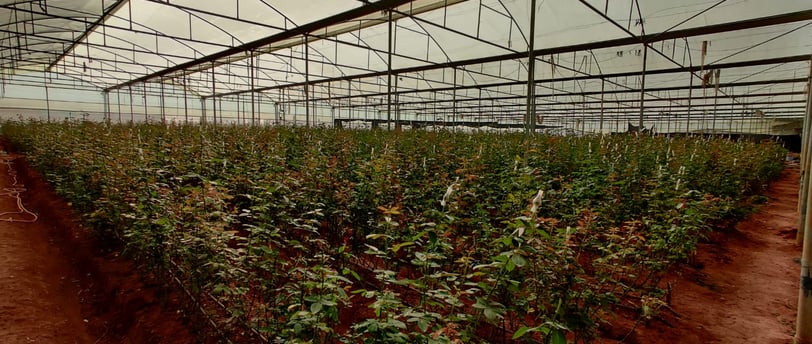HARNESSING SENSOR DATA FOR SUSTAINABLE GREENHOUSE MANAGEMENT
A smart & controlled way of Agriculture
Rishita Chatterjee
2/12/20242 min read


Different countries have different climate conditions that affect the quantity and quality of crop production. Farmers want to use novel technologies that can help them produce crops in large quantities with good quality. The Greenhouse is one of the rapidly growing technologies used for the production of crops. Implementing good farming practices in greenhouse farming is of alarming importance as it protects the crops from external weather parameters, and hence helps to produce good-quality crops throughout the year.
Due to the increase in demand in food crops, good quality crops are not available due to the higher cost of production and less production. Artificial greenhouses take the charge where it is possible to produce good quality crops in sufficient amounts thereby combating the Global food crisis. Intelligent Greenhouses can produce more crops compared to the normal farming systems in the field. The application of sensors or smart intelligent solutions is the probable cause for increase in Greenhouse farming. The Greenhouses are monitored and controlled in an effective manner so that the environmental parameters do not affect the crop quality or quantity and hence the farmers get high production. In a greenhouse, sensors are strategically placed to continuously monitor the atmospheric parameters. The sensors then collect the real-time data, which gets transmitted wirelessly to the central control system. This system analyzes data and transmits automated responses to the growers when the conditions deviate from the optimal zones. By getting instant feedback, the growers can adjust their requirements to maintain an ideal growing atmosphere for their crops to grow.
For the control of greenhouse paraparameters, like humidity, soil moisture, temperature, etc. the “Intelligent’ sensors play a pivotal role as they can be easily monitored and controlled by the artificial intelligence system. The Sensors act as “multi-faceted’ tasker within the Greenhouse environment, facilitating all the optimum growing conditions single-handedly without any hindrances. They can trigger automated systems to adjust ventilation, irrigation and lighting, prompting optimal conditions required for crop growth. Additionally, the All-in-one sensors enable remote monitoring, helping farmers to access data and make informed decisions from anywhere across the world enhancing productivity in greenhouse farming operations.
One can notice that although the initial reason for using greenhouses was to grow crops in a controlled environment, today the integration of smart sensors has reduced the reliance on labor and increased profitability while ensuring efficiency and sustainability. The application of sensors in greenhouse farming offers a plethora of efficient management scenarios; where sensors aid nutrient levels in the soil or hydroponic systems, allowing farmers to adjust their nutrient dosages accordingly. The early detection of pests and diseases can be maximized with sensors which measure parameters such as temperature, humidity and plant health indicators.
This easy synthesis between the smart sensors coupled with real-time insights added with prompt monitoring and management of crops have brought about a brisk transformation which has resulted in increase in yield and enhanced crop quality. Furthermore, the synergy of sensors with automated systems has enabled precise control and efficient resource utilization leading to sustainable farming practices and reduced environmental impact. As technology continues to grow apace, the synergy between sensors and greenhouse farming will bring forth further innovation, ushering in a new era of precision agriculture for a greener productive future.
